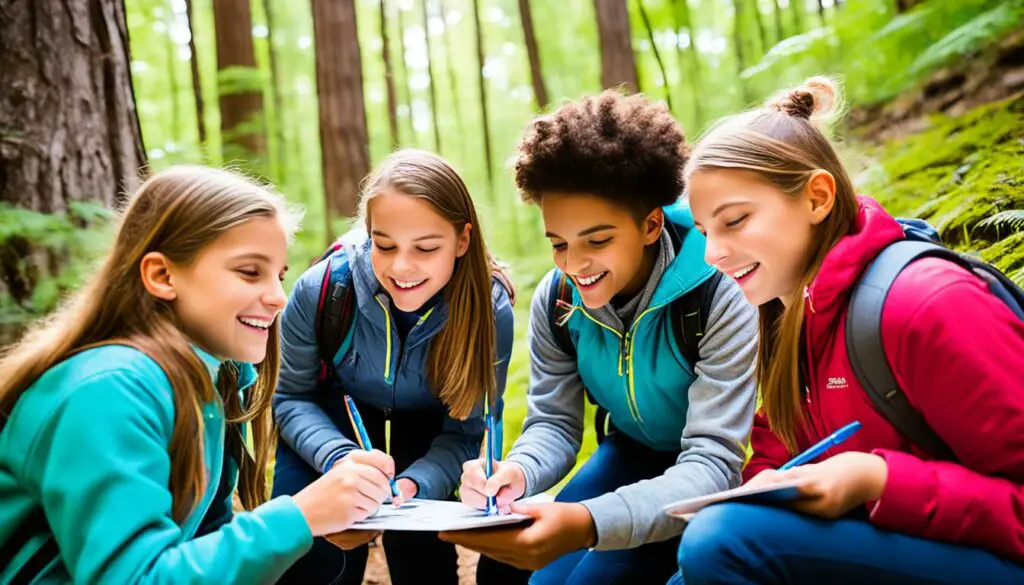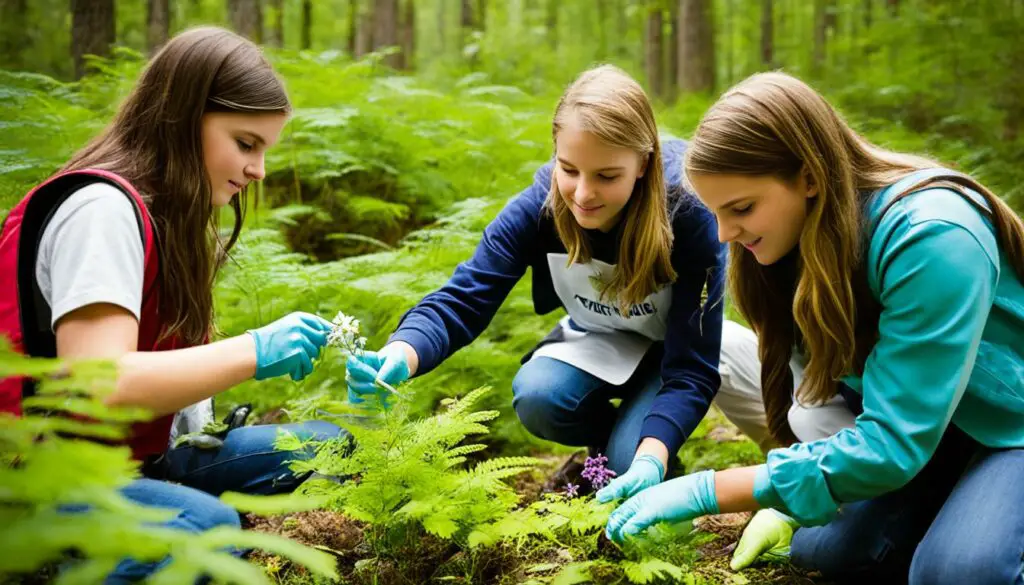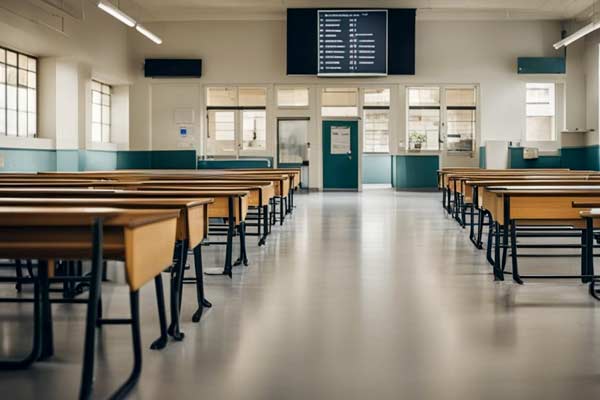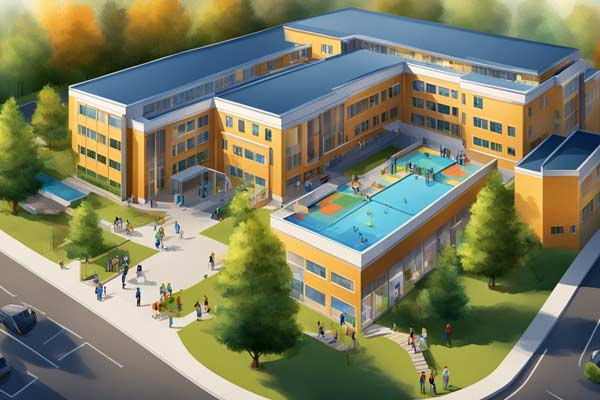Do Middle Schools Have Field Trips? Learn More
Field trips are an integral part of the educational experience for middle school students. But are they still a common occurrence in today’s schools? Do middle schools have field trips as often as they used to?
Are these outings still seen as valuable learning opportunities? Let’s explore the world of middle school field trips and uncover the truth behind their presence in today’s education system.
Over the years, field trips have allowed countless students to delve into real-world learning experiences, giving them access to new environments, resources, and opportunities for socio-emotional growth. However, with changing priorities and budgets, some may question whether field trips remain a priority in middle schools.
This article will delve into the importance and value of field trips for middle school students. We will explore their impact on academic performance, the various field trips students can engage in, and tips for planning and organizing successful outings. We will also highlight how educators can make the most of field trips to enhance student learning and engagement.
So, if you’ve ever wondered about the current state of field trips in middle schools and whether they are still worthwhile, keep reading to discover the truth and power behind these educational adventures.
Why Are Field Trips Important for Middle School Students?
Field trips play a crucial role in enhancing the educational experiences of middle school students. These real-world learning opportunities are more than just a break from the routine; they provide valuable insights and benefits that cannot be replicated within the four walls of a classroom.
One critical advantage of field trips is that they allow students to see how the concepts they learn in school apply to the real world.
Moreover, field trips grant students access to tools, resources, and environments that may not be readily available within their school. Whether visiting a museum, a science center, or a historical landmark, students can immerse themselves in hands-on experiences that bring their learning to life.
Beyond academic growth, field trips also contribute to socio-emotional development. These social and emotional skills are essential in preparing students for the diverse world they will soon enter.
The benefits of field trips extend beyond the experience. Research has shown that field trips have a positive academic impact on students. They contribute to improved test scores and long-term retention of concepts.

🌟 Hey Students! 🚀 Ready for the ultimate experience? Join us on Studentsinside.com's Facebook, YouTube, WhatsApp, and LinkedIn. Click now for tips, fun, and success vibes! 🌈✨ #StudentLife #JoinUs
The Value of Field Trips During Middle School
Field trips provide valuable experiential learning opportunities during middle school. These trips go beyond the confines of the classroom, allowing students to explore different environments and experiences that enhance their academic understanding and relevance.
Organizing and planning field trips require careful consideration to ensure they align with student learning objectives and foster collaboration among colleagues. By doing so, educators can create meaningful experiences that cater to diverse learning styles and engage students in unique ways.
Field trips disrupt students’ daily routines, taking them from their familiar surroundings and exposing them to real-world contexts. This exposure strengthens their understanding of academic concepts by allowing them to see the practical applications of what they learn in the classroom.
Furthermore, field trips allow students to engage with content differently, catering to their learning styles. Whether visiting a museum, attending a workshop, or exploring an interactive exhibit, students can immerse themselves in hands-on experiences that deepen their understanding and promote critical thinking.
Field trips are an experiential learning method that allows students to connect classroom concepts with the world around them.
Moreover, field trips foster a sense of curiosity, exploration, and wonder among students. When students step outside their school environment and into the wider world, they develop a broader perspective and gain exposure to new cultures, perspectives, and ideas.

Benefits of Field Trips During Middle School:
- Enhanced academic understanding and relevance
- Catering to diverse learning styles
- Practical application of classroom concepts
- Promoting critical thinking and problem-solving
- Connecting classroom learning to real-world situations
- Fostering curiosity, exploration, and cultural awareness
| Benefits | Evidence/Supporting Research |
|---|---|
| Improved academic performance | Research studies have shown that students who participate in field trips demonstrate higher test scores, better retention of concepts, and improved attendance compared to those who do not participate. |
| Enhanced critical thinking skills | Field trips provide opportunities for students to analyze and interpret real-world situations, fostering the development of critical thinking skills. |
| Promotion of empathy and cultural understanding | Exposure to different cultures, environments, and perspectives during field trips encourages students to develop empathy and enhances their cultural understanding. |
| Increased engagement and motivation | Field trips offer unique and stimulating learning experiences that can boost student engagement and motivation. They provide a break from the routine of traditional classroom learning. |
The Impact of Field Trips on Academic Performance
Research studies have shown that field trips positively impact academic performance. Students who participate in field trips have been found to score higher on exams, receive higher course grades, have better attendance records, and exhibit fewer behavioral infractions than their peers who do not go on field trips.
These benefits can last two to three years and are especially visible during middle school. Field trips provide hands-on, experiential learning opportunities that make academic concepts more memorable and reinforce learning in the classroom.

Field trips allow students to engage with the material in a practical and immersive way. They allow students to apply the knowledge they have acquired in the classroom to real-world situations, which enhances their understanding and retention of the subject matter.
For example, a field trip to a science museum can provide students with hands-on experiments and demonstrations that reinforce scientific principles taught in class.
Additionally, field trips help stimulate students’ curiosity and critical thinking skills. This deepens their understanding of academic concepts and cultivates their ability to analyze, problem-solve, and think creatively.
Furthermore, field trips contribute to the development of socio-emotional skills. Students can interact with their peers, teachers, and experts in various fields when they participate in field trips. These interactions promote teamwork, communication, and respect for others’ perspectives, fostering empathy and tolerance.
Types of Field Trips for Middle School Students
Middle school students have the opportunity to participate in a variety of field trips that provide valuable learning experiences.
These field trips are designed to engage students, expand their knowledge, and offer unique cultural, local, and virtual experiences. Let’s explore the different types of field trips available for middle school students:
Cultural Field Trips
Cultural field trips expose students to various art forms and allow them to immerse themselves in different cultures. These trips often include visits to museums, theaters, and symphony concerts.
Local Field Trips
Local field trips allow students to connect with their immediate environment and explore the local community. These trips may include visits to parks, libraries, community gardens, or historical landmarks. They also allow students to engage with their surroundings and develop a sense of place and belonging.
Virtual Field Trips
Virtual field trips allow students to explore museums and other educational sites from the comfort of their classrooms. Students can virtually visit historic locations, science centers, or even international destinations through online platforms and resources. Virtual field trips provide accessibility and flexibility while offering engaging and educational experiences.
Each type of field trip presents unique learning opportunities for middle school students. Cultural field trips expose students to different art forms and cultures, local field trips connect them with their immediate environment, and virtual field trips offer the convenience of exploring various destinations online.

Tips for Planning and Organizing Field Trips
Planning and organizing field trips require careful consideration and attention to detail. To ensure successful field trip planning, here are some valuable tips:
- Come up with engaging ideas: When planning a field trip, it is essential to brainstorm ideas that align with the student’s learning objectives. Choose destinations or activities to enhance their understanding of specific subjects or concepts.
- Obtain approval: Before finalizing any plans, seeking approval from school leaders is crucial. Demonstrate the field trip’s educational value, highlighting how it will contribute to students’ academic growth and overall learning experience.
- Create a comprehensive plan: Develop a detailed plan covering all field trip aspects. Consider factors such as medication requirements, the ratio of chaperones to students, emergency contacts, and contingency plans in case of unforeseen circumstances.
- Provide alternative learning experiences: It’s essential to accommodate students who may not be able to participate in the field trip. Offer alternative activities or assignments that provide similar learning opportunities and ensure all students can benefit from the educational experience.
- Address financial barriers: Consider students and their families’ potential financial constraints. Explore avenues for securing funding or scholarships to ensure all students have equal access to the field trip experience.
Field Trip Planning Checklist
| Aspect | Description |
|---|---|
| Define learning objectives | Determine the educational goals the trip should align with |
| Choose a destination | Select a location or activity that supports the learning objectives |
| Obtain approval | Seek approval from school leaders or administrators for the field trip |
| Secure transportation | Arrange transportation to and from the field trip location |
| Arrange for chaperones | Identify and coordinate chaperones to supervise students during the trip |
| Create a detailed itinerary | Outline the schedule, activities, and any necessary arrangements |
| Communicate with parents | Inform parents about the details of the field trip, including permission slips and associated costs. |
| Prepare students | Provide relevant background information and expectations to students before the trip. |
| Ensure safety | Consider safety measures and emergency protocols to ensure student well-being. |
| Debrief and reflect | Engage students in discussions and reflections about the field trip experience. |
Making the Most of Field Trips for Middle School Students
Educators can adopt various strategies to enhance the learning experiences and maximize the benefits of field trips for middle school students.
One approach is to plan pre-trip and post-trip activities that effectively prepare students for the field trip and allow them to reflect on their experiences afterward.
This helps students develop a deeper understanding of the concepts they encounter during the trip and encourages critical thinking and self-reflection.
Field trips can serve as touchpoints for entire units of study, providing a real-world context to the academic content students explore in the classroom. Educators can build upon the field trip experiences by incorporating related discussions, assignments, and projects into lesson plans.
Furthermore, leveraging field trips as valuable learning opportunities involves integrating them into the curriculum to enhance student understanding and overall educational experiences.
In conclusion, by incorporating pre-trip and post-trip activities, linking field trip experiences to classroom content, and integrating them into the curriculum, educators can maximize the potential of field trips to enhance learning and provide meaningful educational experiences for middle school students.
FAQ
Q: Do middle schools have field trips?
A: Yes, middle schools often organize field trips as part of their educational activities.
Q: Why are field trips important for middle school students?
A: Field trips provide real-world learning opportunities, access to new environments and resources, foster socio-emotional growth, and have an academic impact.
Q: What is the value of field trips during middle school?
A: Field trips offer experiential learning opportunities and enhance academic concepts. They also cater to diverse learning styles and help students see the relevance of their learning.
Q: What is the impact of field trips on academic performance?
A: Studies have shown that field trips improve test scores, improve concept retention, raise course grades, increase attendance, and reduce behavioral infractions.
Q: What are the types of field trips for middle school students?
A: Middle school students can participate in cultural field trips, local field trips, and virtual field trips, each offering unique learning experiences.
Q: What are some tips for planning and organizing field trips?
A: Successful field trip planning involves tying the trips to learning objectives, obtaining approval, creating comprehensive plans, and providing alternative options for students who cannot participate.
Q: How can educators make the most of field trips for middle school students?
A: Educators can maximize learning experiences by incorporating pre- and post-trip activities, using field trips as touchpoints for units of study, and encouraging students to apply what they learn during the trip to their assignments and discussions.








